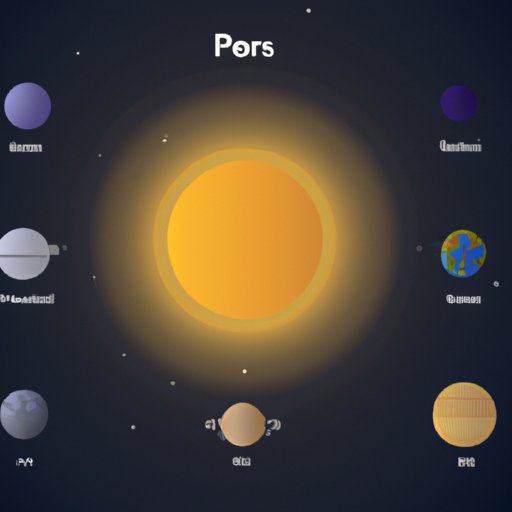Introduction
The solar system is a collection of celestial bodies that orbit around the Sun. This includes the eight official planets, dwarf planets, asteroids, comets, and other objects. Astronomy is the scientific study of these objects and their interactions with one another. By understanding the origins and evolution of the solar system, we can gain insights into the wider universe around us.
Exploring the Solar System
The solar system was formed 4.6 billion years ago from an interstellar cloud of dust and gas. Over time, gravity caused the material to coalesce and form the planets. The Sun is the source of energy for the planets, providing light and heat that allow life to exist.
There are eight officially recognized planets in the solar system. Mercury is the closest planet to the Sun and is the smallest. Venus is the second closest planet and is the brightest object in the night sky. Earth is the third planet and is the only known planet to support life. Mars is the fourth planet and is the most explored planet in the solar system. Jupiter is the fifth planet and is the largest. Saturn is the sixth planet and is best known for its spectacular rings. Uranus is the seventh planet and is tilted on its side. Neptune is the eighth planet and is the farthest from the Sun.
Astronomers use a variety of tools and technologies to study the solar system. Radio telescopes allow scientists to detect radio waves from stars and planets. Telescopes such as the Hubble Space Telescope have allowed us to take pictures of distant galaxies. Space probes have been sent to explore the planets up close. These probes have provided valuable data about the planets and their environments.
What Role Does Science Play in Exploring the Solar System?
Science plays a key role in helping us understand the solar system. Scientists use scientific theories to explain the behavior of the planets and other objects in the solar system. For example, Newton’s law of universal gravitation explains why objects in the solar system orbit around the Sun.
Astronomical discoveries have also shed light on the structure and composition of the solar system. In the early 20th century, Edwin Hubble discovered that the universe is expanding. More recently, the Kepler mission found thousands of new exoplanets outside of our solar system. These findings have given us a better understanding of the vastness of space.
Technology has also been instrumental in exploring the solar system. Telescopes have allowed us to observe distant galaxies and uncover new mysteries of the universe. Space probes have enabled us to explore the planets up close. As a result, we have gained invaluable insights into the nature of the solar system.
Conclusion
In conclusion, science has played a vital role in helping us explore the solar system. Scientific theories have been used to explain the behavior of planets and other objects. Astronomical discoveries have revealed the structure and composition of the solar system. Technology has enabled us to observe distant galaxies and explore the planets up close. By combining all of these elements, we can continue to gain a deeper understanding of our universe.
(Note: Is this article not meeting your expectations? Do you have knowledge or insights to share? Unlock new opportunities and expand your reach by joining our authors team. Click Registration to join us and share your expertise with our readers.)
